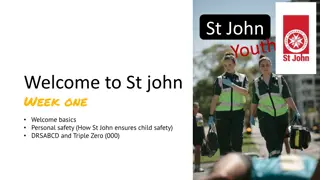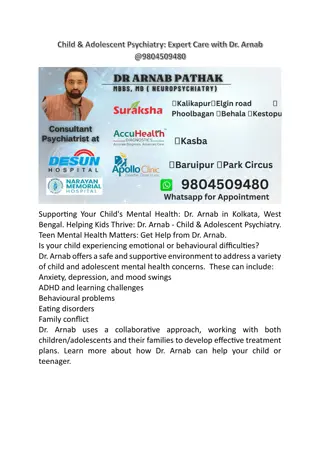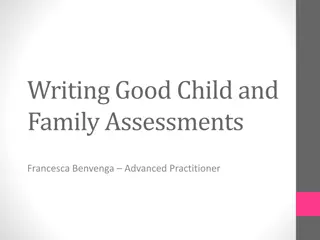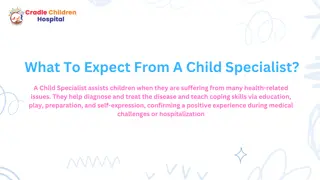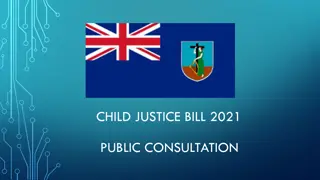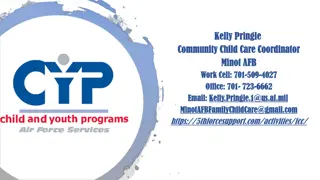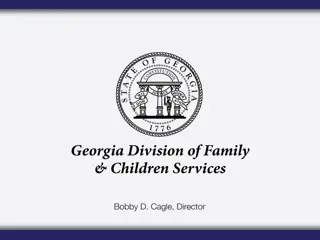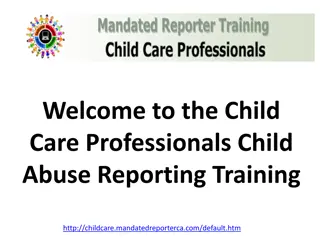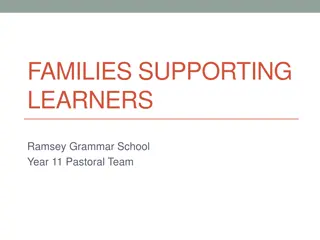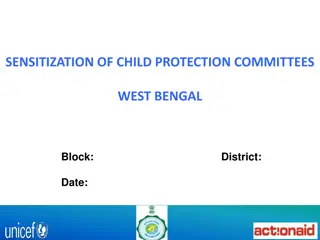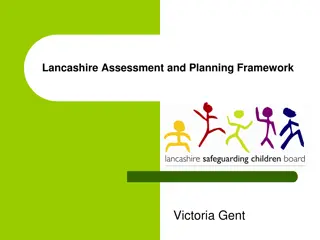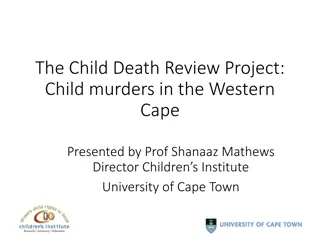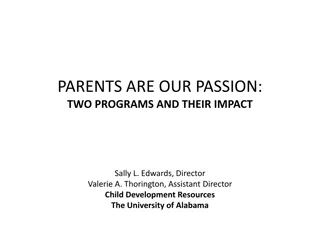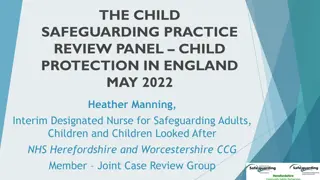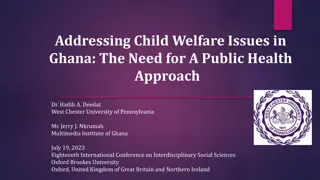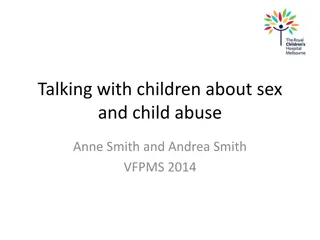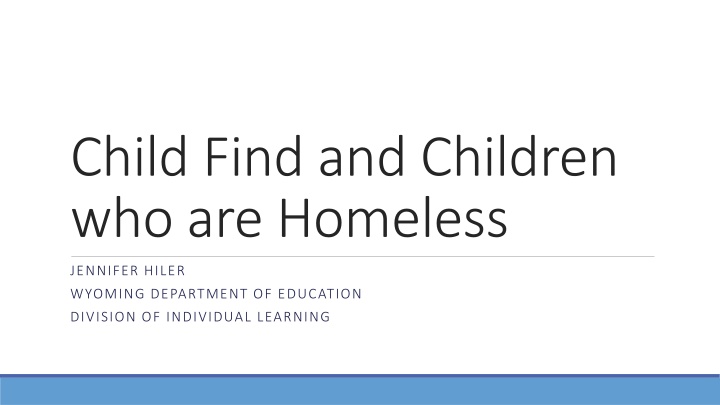
Impacts of Homelessness on Children's Education and Health
Explore the challenges faced by homeless children in accessing education and the detrimental effects on their health and development. Learn about the intersection of special education and homeless education requirements, emphasizing the child find process. Discover the heightened risk factors for emotional disturbances and cognitive delays among homeless children, highlighting the gaps in receiving proper treatment.
Download Presentation

Please find below an Image/Link to download the presentation.
The content on the website is provided AS IS for your information and personal use only. It may not be sold, licensed, or shared on other websites without obtaining consent from the author. If you encounter any issues during the download, it is possible that the publisher has removed the file from their server.
You are allowed to download the files provided on this website for personal or commercial use, subject to the condition that they are used lawfully. All files are the property of their respective owners.
The content on the website is provided AS IS for your information and personal use only. It may not be sold, licensed, or shared on other websites without obtaining consent from the author.
E N D
Presentation Transcript
Child Find and Children who are Homeless JENNIFER HILER WYOMING DEPARTMENT OF EDUCATION DIVISION OF INDIVIDUAL LEARNING
Session Goal This session will explore the intersection of special education and homeless education requirements, particularly as it pertains to the child find process
True or False Children who are homeless are twice as likely to have a learning disability.
True or False Children who are homeless are twice as likely to have a learning disability. True
True or False Children who are homeless are twice as likely to have an emotional disturbance as children who are not homeless.
True or False Children who are homeless are twice as likely to have an emotional disturbance as children who are not homeless. False Children who are homeless are THREE times as likely to have an emotional disturbance as children who are not homeless.
Impacts on Health and Development Poverty Risk Factors Emotional & Social Challenges Acute & Chronic Stressors Cognitive Lags Health & Safety Issues Teaching with Poverty in Mind: What Being Poor Does to Kids Brains and What Schools Can Do About It by Eric Jensen 7
Impacts on Health and Development 75% - at least one major developmental delay 40% - two or more major developmental delays 35% - emotional or behavioral problems Anxiety Depression Aggression and hostility Withdrawal Intense reaction to minor events 20% - extreme emotional distress warranting professional intervention 75% of these children do not receive treatment From McKinney-Vento and Preschool Aged Homeless Children, National Center for Homeless Education 8
Wyoming by the Numbers IDENTIFIED HOMELESS CHILDREN K-12 1600 1447 1400 1173 1200 1038 Number of Children 1000 837 800 600 370 400 200 0 SY 07-08 SY 10-11 SY 11-12 SY 12-13 SY 13-14 9
Barriers to special education services Not being identified as needing special education services Difficulty with diagnosis due to mobility and other stressors Lack of timely assessment, diagnosis, or service provision Lack of continuity of services due to school transfers Lack of timely or efficient records transfer when enrolling in a new school Lack of an available parent or surrogate to represent the child or unaccompanied youth Others???? Turn to neighbor and discuss .
Frequently Asked Questions: Child Find and Children who are Homeless What are the rights of children who are homeless with disabilities under IDEA Part B?
Frequently Asked Questions: Child Find and Children who are Homeless What are the rights of children who are homeless with disabilities under IDEA Part B? Children who are homeless have the same IDEA protections/requirements as children with disabilities who are not homeless. FAPE Components: Receive Special Education and related services to meet their unique needs Parental Consent Evaluation, and eligibility requirements IEP requirements LRE requirements Procedural Safeguards: due process rights, including the discipline procedures
F&Q Continue Child Find and Children who are Homeless What are Part B s Child Find requirements for children who are homeless?
F&Q Continue Child Find and Children who are Homeless What are Part B s Child Find requirements for children who are homeless? Child find requires states to locate, identify and evaluate ALL children suspected of having a disability who may be eligible to receive special education, including children who are homeless.
F&Q Continue Child Find and Children who are Homeless Does the school have to initiate Child Find process for a child who is homeless who may leave the school during the academic year?
F&Q Continue Child Find and Children who are Homeless Does the school have to initiate Child Find process for a child who is homeless who may leave the school during the academic year? Yes, because Child Find is a requirement of IDEA, all children suspected of having a disability must be evaluated in a timely manner
F&Q Continue Child Find and Children who are Homeless What are the evaluation requirements for children who are homeless transferring from one school to another?
F&Q Continue Child Find and Children who are Homeless What are the evaluation requirements for children who are homeless transferring from one school to another? Assessments of children who transfer from one school to another in the same school year must be coordinated with those children s prior district or public agency, as necessary and timely as possible to ensure completion of full evaluations.
F&Q Continue Child Find and Children who are Homeless What are the expectations to the timeline to complete evaluation for children who are homeless?
F&Q Continue Child Find and Children who are Homeless What are the expectations to the timeline to complete evaluation for children who are homeless? Initial evaluation established timeframe does not apply if: Parent of the child repeatedly fails or refuses to produce the child for the evaluation Child is enrolled in a school district after the timeframe has begun and prior to a determination by the child s previous school district whether the child is a child with a disability. In this case, the new school district may extend the timeframe only if they are ensuring that sufficient progress is taking place towards the completion of the evaluation and the parent the new school agree to a specific time when the evaluation will be completed.
F&Q Continue Child Find and Children who are Homeless What happens when a student who is homeless transfers to a new school before the previous school has completed the initial evaluation?
F&Q Continue Child Find and Children who are Homeless What happens when a student who is homeless transfers to a new school before the previous school has completed the initial evaluation? In this case, while the evaluation is still pending, the child s previous school must coordinate the assessments as necessary and as quickly as possible. The new public school must take reasonable steps to promptly obtain the child s records, including supporting records and any records related to the provision of special education services to assist in the prompt completion of the evaluation and avoid replication of some aspects of the previous school s evaluation. FERPA regulations apply and allow disclosure without parent s consent of a student s education records to officials of a school where a student is seeking to enroll.
F&Q Continue Child Find and Children who are Homeless Who determines eligibility for special education for children who are homeless?
F&Q Continue Child Find and Children who are Homeless Who determines eligibility for special education for children who are homeless? Once the evaluation is completed, parents have the right to receive a copy of the evaluation report at no cost. If the child is an unaccompanied homeless youth, the requirements for appointment of surrogate parents are applicable to represent the child in special education matters. A group of qualified professionals including the parents or surrogate parent must determine whether the child is a child with a disability in accordance with eligibility criteria under IDEA.
District Responsibilities Every district must designate a local homeless education liaison District must ensure that the local liaison is trained in the proper administration of the McKinney-Vento statute Districts must identify homeless children, even if they are not currently enrolled in school Districts must review policies to eliminate barriers to homeless children and youth 25
District Responsibilities Providing immediate enrollment Informing parents, guardians, and/or youth of their educational rights Ensuring the public posting of educational rights through the school district and community Linking homeless students with educational and other services, including preschool and health services Ensuring that disputes are resolved promptly Collaborating with other district programs and community agencies 26
Review with a neighbor Share with the person next to you- What are the Child Find requirements for children who are homeless? Does the school have to initiate Child Find process for children who are homeless that MAY leave during the academic school year? Discuss at least two special education barriers that children who are homeless may have? Identify current Child Find processes in your district. Discuss with your neighbor.

